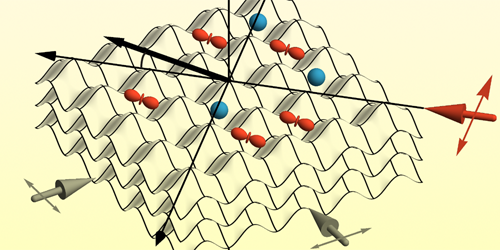Elusive Clock Transition in Strontium Revealed
Optical atomic clocks rely on the existence of precisely defined, narrow-linewidth electronic transitions of atoms and ions. Currently, the most precise of these clocks uses the transition of strontium-87 from its ground state to its so-called 3P0 excited state (see Viewpoint: A Boost in Precision for Optical Atomic Clocks). Last year, Sebastian Blatt at the Max Planck Institute for Quantum Optics in Germany and his colleagues observed a similar transition in strontium-88. Now that same team has demonstrated coherent control of this transition, which involves strontium-88’s ground and 3P2 excited states [1]. The researchers say that, in addition to its potential use in atomic clocks, strontium-88’s 3P2 excited state could be used in quantum computers and quantum simulations and as a benchmark in atomic-structure calculations.
Strontium-88’s ground-to-3P2 transition was explored for use in an optical atomic clock in the 1990s. The transition was promising because of the 3P2 state’s long lifetime. But efforts in that direction didn’t pan out. In this so-called magnetic quadrupole transition, the transitioning electron is excited by a photon’s magnetic—rather than electric—field, making the transition tricky to induce. Predictions also indicate that atoms in the 3P2 state are especially sensitive to environmental effects, such as external magnetic fields, and that they can transition to other states by colliding with each other inelastically.
Blatt and his colleagues overcame these problems by developing a “magic” optical lattice trap, which is state insensitive. The state insensitivity meant that the trap confined atoms in the ground and 3P2 states equally. It turns out that this equality of confinement leads to protection from environmental perturbation and preventing collisions.
–Marric Stephens
Marric Stephens is a Corresponding Editor for Physics Magazine based in Bristol, UK.
References
- V. Klüsener et al., “Long-lived coherence on a µHz scale optical magnetic quadrupole transition,” Phys. Rev. Lett. 132, 253201 (2024).




